We’re on the cusp again—at that edge of something finishing, about to step into the new.
As I write this, we’ve entered the old moon’s final waning, and on Saturday we’ll transition through a last spell of darkness into the Aries new moon. In the zodiac calendar, this marks the beginning not only of a new lunation, but of a whole new year. Sometimes, when I set my goals and benchmarks for the year, I don’t work from January 1st to December 31st, but from one Aries new moon to the next, twelve months later. If you’re yearning for a creative restart, consider this a potent opportunity.
New Moon Dream
Crossing from the old zodiac year into the new, you may decide to embrace this moment as an invitation to release what no longer serves and dream anew.
But what does that mean? To dream?
On one level, we can view dreaming as an act of embracing entry into the “imaginal realm”—a term coined by French philosopher Henry Corbin (1903 - 1978), connoting a place quite real. In his book, The Secret History of Dreaming, Robert Moss describes that place as “a dimension beyond the physical that is the precinct and playground of true imagination, a creative realm that may be the seedbed of our great discoveries and innovations, and even the origin of events and situations that are manifested in the surface world.”
Giving ourselves permission to dream, regardless of current events and circumstances—to imagine a life we love, to bring rich sensory detail to that vision, and to embody the feeling of being in love with life itself—all of that amounts to a radical, creative act of soul-honouring. Discovering our dreams is also about honouring the earth, and recognizing that in our brief time here, each one of us has a path and a purpose.
Of course, we can write down our dreams anytime. But this Saturday, and throughout the weekend, with the energies of the new moon and partial solar eclipse, you may find yourself inspired to dream with an extra cosmic assist.
On the note of welcoming a creative reset, here are a few more thoughts on Henry Corbin’s imaginal realm, also known in Jungian circles as the mundus imaginalis. This comes again from Moss’s Secret History:
“[Corbin] struggled through thickets of language [learning Arabic to study medieval Sufi philosophers] to help us grasp the idea that creative imagination centers on the operations of himma—the power and perception of the heart. It is himma that works wonders of manifestation by firing and fuelling the active imagination. It signifies ‘the act of meditating, conceiving, imagining, projecting, ardently desiring’… Himma is the mode of creative imagination—charged by the deepest passion—that has the power to create objects and produce changes in the outer world.”
What are you imagining for yourself? For the time we are in? For our world?
Where is your greatest passion? What would you love?
I ask those questions as reminders of the beauty of our creative potential. Consider any of them simply as offerings—optional prompts to help you clarify the wishes of your soul.
Embracing the transition to a new phase, this week I decided to embark on Brianna Wiest’s The Pivot Year, a book to be savoured on each of 365 days. Wiest brings depth and wisdom to her daily messages. I’d come across her book last January and put it aside. But since a new year can start on any day, why not now? Each daily reading invites a reconsideration of what “success” means; each is a catalyst for clearer seeing and deeper listening.
Savouring The Pivot Year is part of my commitment to Harmony in 2025. I’ve also re-entered one of the dream-building programs I coach—deep, transformative work that helps me to stay limber and keep growing. If you’re experiencing a pull to personal transformation right now, please feel a warm welcome to reach out to me. One of my specialities is helping creatives to release what’s done, to clarify what’s seeking to emerge, and to thrive in the process of honouring one’s path through empowered action.
The upcoming new moon is not only an opportunity to set our intentions and sharpen our visions for an inspired and fulfilling year ahead, but a time to engage the power and perception of our hearts. More than ever, our world needs heart-centred dreamers. Having said that, I also want to point to the other meaning we take from the word dream—because of course, our dreams are not only things we form and build, but visions we receive at night, and sometimes during the day, in altered states of conscious awareness. Receiving is a crucial part of the creative process, and one that many people miss in a culture that’s forgotten the importance of non-linear ways of knowing. Our inner guidance system.
“Dreams are part of our human survival kit, part of what has kept us going, and evolving on this planet. Across history most people have valued dreaming for two reasons beyond all others: because dreams enable us to see into the possible future, and because they put us in touch with sources of knowledge beyond the ordinary mind.” —Robert Moss
Surrender
This last waning phase of the moon, including the dark moon (that final hour before the new one rises) offers an invitation to connect with intuition—inner guidance “beyond the ordinary mind.” Now, we can dive into our own darkness, opening ourselves to receive insight into what needs releasing.
To that end, this past week, I have been slowly decluttering, cleaning, and clearing my office—a space that represents the centre of my creative universe, though of course the real centre for any of us is within. And the act of clearing is an act of making room for new energies.
Is there a space in your home that you feel drawn to clear? What about in your life?
I say that I’ve been working slowly, because I’ve been experiencing the final, gradually diminishing effects of a second long flu. Much of my winter (January and March) involved having to slow down, and occasionally, to stop. In a sense, the whole season felt like a Between Time. The upside has been that I’ve experienced a deepening of my journey as a woman. While my physical energies were temporarily depleted, my dream life has been vivid, the images meaningful. It’s been a time when messages from the unconscious have spoken—a time to listen carefully, to receive information and ponder, and to let some things go. The dreams have been showing me this is a time of preparation for the new.
What about you? Have your dreams at night been vivid?
Have your intuitions been guiding you to let go of certain old ideas and ways of being in order to begin a new phase?
I recommend writing down your dreams and reflecting on them, in order to sense the ways in which the unconscious is communicating with you.
Releasing what needs to go before the new can enter often involves forgiveness work. A Course in Miracles defines forgiveness as the act of releasing an internal block to love’s presence, and I think of that as spiritual decluttering. Sometimes we release chachkas. Sometimes whole boulders.
Is there anyone you feel intuitively drawn to forgive?
And what about self-forgiveness?
In my years of serving others as a professional coach, I’ve come to recognize that at the heart of all forgiveness work is self-forgiveness.
It’s liberating.
During March, I’ve had to rest and forgive myself for putting unnecessary pressure on myself, and for feeling the impatience instilled by our culture, a tendency that we can learn to unlearn as we age and grow.
Having the flu for much of the winter caused me to slow down and forgive myself for not being able to do everything I would otherwise have loved to do. Temporarily, I had to let go of keeping up with articles by writers whose work I follow. I had to turn down invitations from people I care about. I had to put off my own work. So uncomfortable.
Yet so be it.
Healing is about reconnecting with the soul. I love this famous quote by Dr. Martin Luther King Jr.’s teacher, Howard Thurman:
"Don't ask what the world needs. Ask what makes you come alive, and go do it. Because what the world needs is people who have come alive."
What activities, including restful ones, make you come alive?
While I was sick, my soul brought me home to books.
Bless What You Love
I love reading and writing, and other writers and their books. One of the things I felt guided to do while I was sick, once again, was to move away from screens and onto pages. A restorative act.
Here are snapshots of a few of the books I’ve been reading. I’ll say more about them soon, as I return to social media.

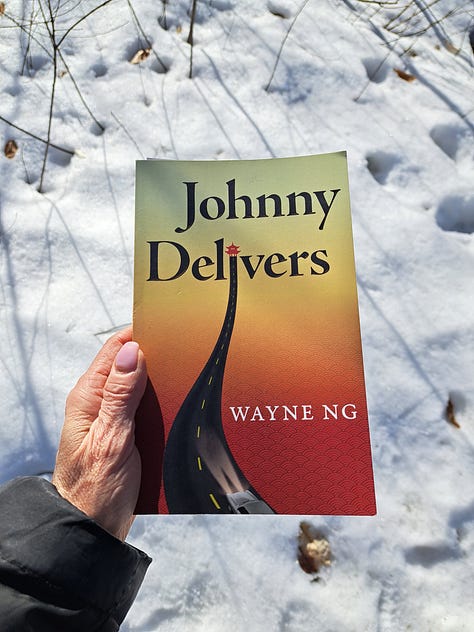
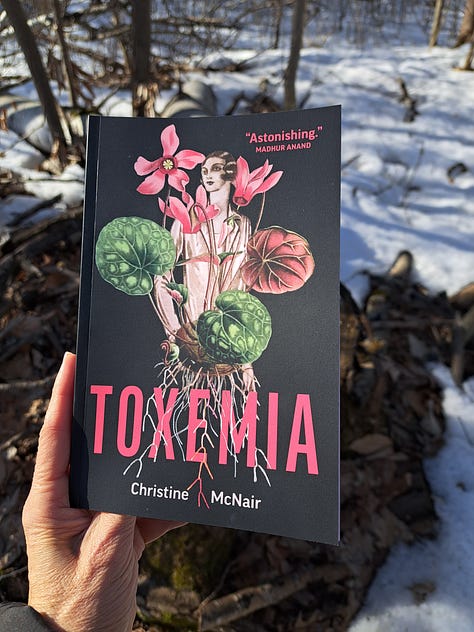
This slow-motion time of reading, resting, stepping back, and reflecting reminds me of another Between Time—that period a writer goes through after a book has been accepted for publication and before its actual release.
Last month, I learned that my next novel, River of Dreams, will launch in the fall of 2026—which means it’s not time to share much about it yet. Of course, there are lots of behind-the-scenes things that go on with a book in this phase, including a few wonderful colleagues saying yes to reading the manuscript and writing endorsements, and its author searching for recently published comparable books in order to help clarify the new novel’s ideal readers.
Finding comparable books is often a challenge for writers, and in this case, it has been for me. I’ve been hunting for character-driven metaphysical stories with otherworldly elements, and tales with ghostly atmospheres. Yet my novel is a work of historical fiction and literary realism, not a fantasy. It’s about a highly intuitive protagonist.
If you’re aware of a good recent novel (post 2009) that brings those elements together, please let me know.
That brings me to a double dose of wonder…
An editor and longtime friend who’s read my manuscript recently told me that River of Dreams reminds her of some of L. M. Montgomery’s work. At first, I was a little shocked. After all, my novel is for adults, and my character walks a dark edge. Yet my colleague wasn’t referring to the Anne of Green Gables books that I devoured in fifth grade, but to a less famous series, Emily of New Moon, which I never got to as a child, having leapt from Anne Shirley into the mysterious adult world of Daphne du Maurier’s novels when I was eleven.
On that point of leaving “children’s books” for “adult fiction,” I feel compelled to add that one of the great disappointments of Montgomery’s life was seeing her novels promoted exclusively, and far too narrowly, to little girls, instead of to the much broader adult readership for whom they were intended.
Novelists intuitively understand himma—the power and perception of the heart.
That is what an adult reader feels while entering Montgomery’s Emily of New Moon, a novel published in 1923, one of the years in which my own next book is set. As you might imagine, I picked up the first of the Emily trilogy right after my colleague’s comment. Whether or not it’s like my own novel is no longer my reason for reading it. I’m reading the book because it takes me to moments of awe and lifts my soul:
“It had always seemed to Emily, ever since she could remember, that she was very, very near to a world of wonderful beauty. Between it and herself hung only a thin curtain; she could never draw the curtain aside—but sometimes, just for a moment, a wind fluttered it and then it was as if she caught a glimpse of the enchanting realm beyond—only a glimpse—and heard a note of unearthly music.”
As I was starting Emily, I felt compelled to learn more about Montgomery’s later life, and in particular, where she’d lived during her last years in Toronto. If you’re familiar with her famous Anne books, then you’ll know their author was born and raised on Prince Edward Island and that Montgomery set many of her stories there. After marrying in 1911, she eventually moved with her family to various communities in Ontario. For some reason, I’d mistakenly thought that Montgomery had lived her final years in Toronto’s Rosedale neighbourhood, far away from the city’s west end where I was raised. But no. A few days ago, I discovered that her last house, “Journey’s End,” is about six kilometres east (approximately four, as the crow flies across the Humber River) from the house where I grew up.
Telling you this, my inner ten-year-old gets tingles.

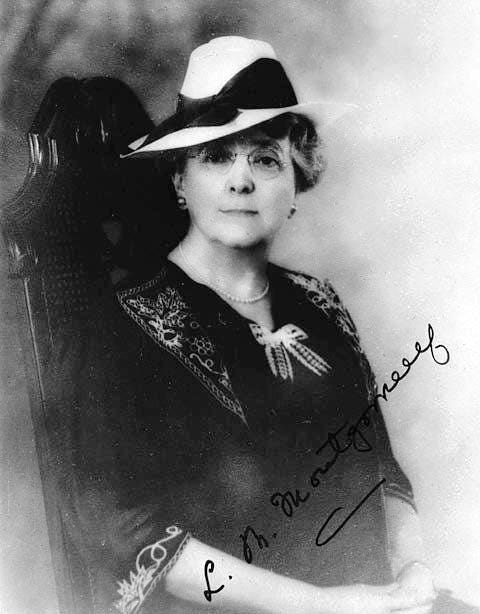
Writing poetry last weekend, I was drawn to an old tarot deck, one I picked up in the late ‘90s—Inner Child Cards by Isha and Mark Lerner. The card I drew was Little Red Cap, or in traditional tarot, The Fool. Its number is zero—the moment in the Between Time before we step forth into a new adventure.
In the Lerner deck, that first card in the Major Arcana represents “the child spirit within, who is travelling the illumined world of higher consciousness.” That’s what Emily of New Moon does—connects me with my child spirit.
And my dreams.
What connects you with your dreams?
When we make contact with the fullness of ourselves through dreaming, releasing what no longer serves, and embracing what gives us life, we gain—or regain—a sense that Montgomery conveys through a young character’s eyes, that life is “a wonderful, mysterious thing of persistent beauty.”
Happy New Moon.
Quote of the Week:
“There is a great power in not knowing. Not knowing what is next, not knowing what to decide, not knowing how you will make it to where you know you want and need to be. Every given moment contains within it doorways of opportunity, and when you choose to walk through one, you make realities available to you that were once invisible. When you do not know what is next, you enter the realm of infinite potential. Instead of trying to plan your life so safely and so succinctly, you can begin to plan for the moment, the joy, the journey.”
—Brianna Wiest, The Pivot Year
Video of the Week:
I made this one back in the winter and shared it on social media. It’s about a journal technique for tapping into inner guidance.
What’s Ahead:
Look for my next letter to you on Friday, April 11th.




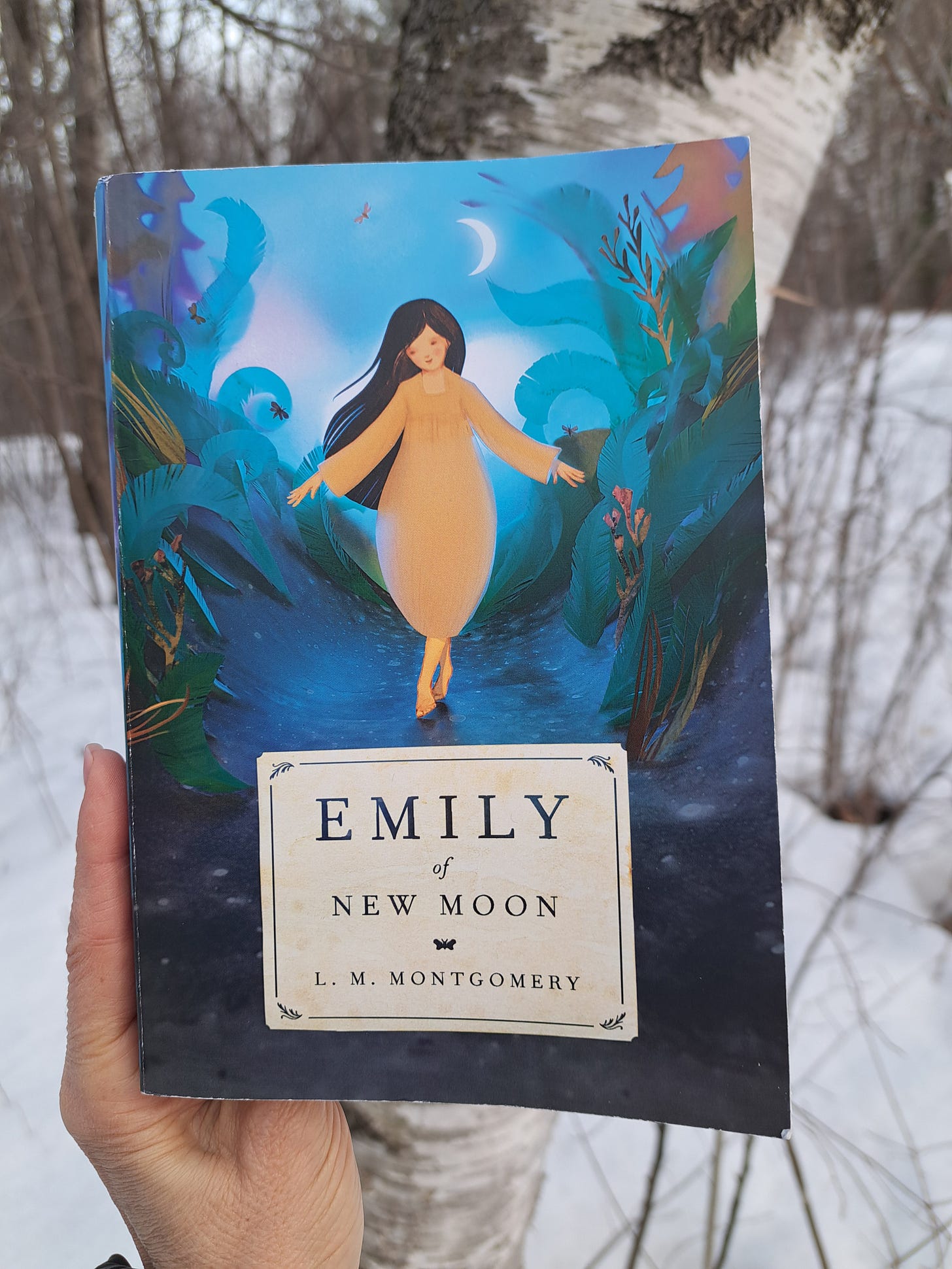
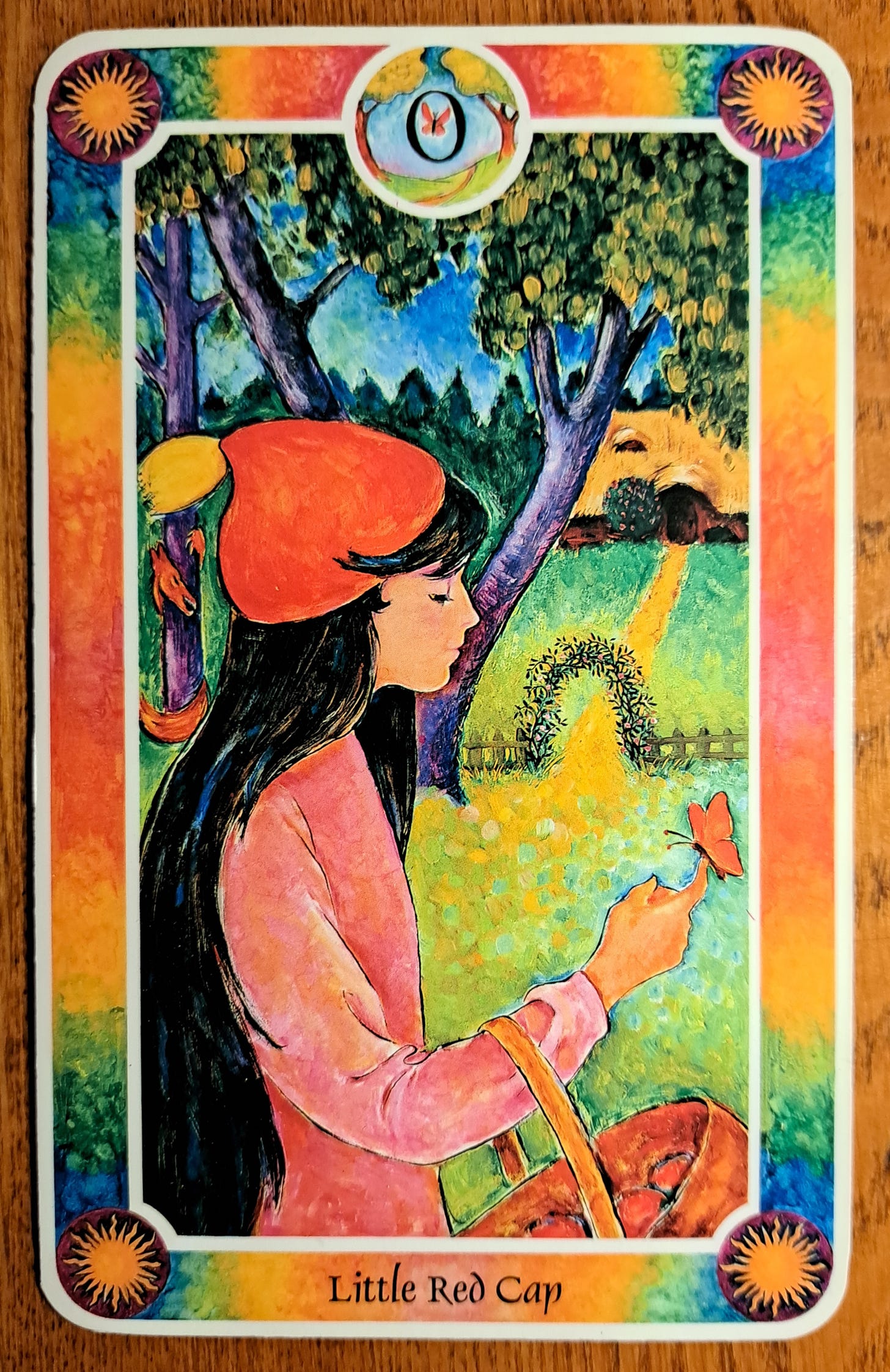

Oh my gosh, Robin. There is so much in here that resonates! First, you've inspired me to read Emily of New Moon. I loved the Anne of Green Gables series as a child, of course, but this is the first I'm hearing of her other work. As a writer of a YA series of time travel adventures, I often talk to parents--who almost always tell me they love reading YA, and want to read my books before their kids do!
Second, as you know, I'm also a devotee of Robert Moss's work, keeping a dream journal and dreaming into the liminal times. (Particularly love entering the "cinema of dreams" as he calls it, to "see" what's playing). One of the most fascinating ideas I've been exploring is that we are living in a dream world--it's all a facade, behind which is something so vast, we may not (yet) be capable of perceiving it. The whole idea of what's behind the veil, or the screen of the cinema is perfect to dream into in such a liminal moment as we are in.
Glad you're back and feeling better, my friend. Dreaming with you in this moment of starry wonder!
“embody the feeling of being in love with life itself—all of that amounts to a radical, creative act of soul-honouring” < so grateful for time and space for my daily practices that light up my love of this life: singing for water, soul journalling, daily dance parties… thank you for underscoring the value of this!